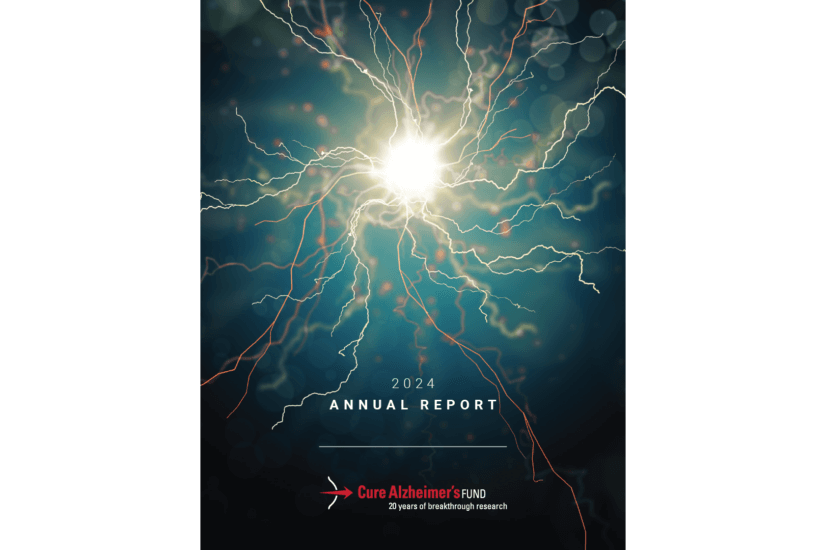The FDA recently approved the first diagnostic agent for brain imaging of tau neurofibrillary tangles to help diagnose patients being evaluated for Alzheimer’s disease. The drug, flortaucipir F 18, is a radiotracer under the brand name TAUVID and was developed by Avid Radiopharmaceuticals, Inc., a subsidiary of Eli Lilly. The approval of TAUVID follows that of AMYVID, the first amyloid radiopharmaceutical, eight years earlier; it was also developed by the same company. (Since then, other amyloid radiopharmaceuticals have been approved by the FDA.)
Amyloid and tau pathology cannot be imaged directly; radiotracers “tag” them so that when the tracer’s signal is picked up by imaging technology, it indicates the presence of amyloid or tau. As with amyloid radiotracers, TAUVID is used in Positron Emission Tomography, or PET, scans. The radiotracers are given intravenously and travel through the bloodstream into the brain, where they attach to their target and label it to be visualized. As their names suggest, AMYVID binds and labels amyloid-beta plaques; TAUVID binds and labels tau neurofibrillary tangles.
A radiotracer contains a short-lived, or unstable, radioisotope. With AMYVID and TAUVID, the radioisotope fluorine-18 decays to oxygen-18—a stable naturally occurring isotope of oxygen. As the radioisotope decays, it emits a positron—the antimatter counterpart of an electron. Wherever a positron encounters a nearby electron, the two collide and annihilate each other, creating an energy burst detectable by a PET scanner but harmless to the person being scanned. A computer system can then form a three-dimensional image based on the location and amount of radiotracer signal, thereby visualizing the target in the body. Tau neurofibrillary tangles and their spread are part of the progression of Alzheimer’s disease, and brain imaging with TAUVID can help identify and differentiate Alzheimer’s from other neurodegenerative diseases.
In the clinic, patients are currently assessed for Alzheimer’s disease based on their symptoms. It is typically a diagnosis of exclusion: other potential causes for memory problems are ruled out first. So far, a definitive diagnosis of the disease can only be made by examining brain tissue post-mortem for the presence and distribution of both amyloid-beta plaques and tau neurofibrillary tangles. With the availability of amyloid radiotracers, like AMYVID, and the recent approval of TAUVID, evaluation through PET scans may significantly help in the diagnosis and staging of Alzheimer’s disease.
However, while amyloid PET scans are approved for clinical use, their cost is not yet fully supported by the Centers for Medicare and Medicaid Services (CMS). Limited coverage is only available for those participating in clinical trials that meet specific criteria stipulated by health care payors. Diagnostic PET scans are expensive, and, in the absence of disease-altering treatments specific to Alzheimer’s, their value to clinicians and patients has been a subject of debate. A clinical study in which PET scans were reimbursed by CMS, called the Imaging Dementia-Evidence for Amyloid Scanning (IDEAS) study, examines the association between amyloid PET scan results and patients’ care management and may provide enough data to support future insurance coverage.
Despite their limited use in clinical practice, diagnostic tests for Alzheimer’s disease are commonly performed in clinical research, including clinical trials. The use of biomarkers and PET imaging has informed our understanding of the progression of the disease and has led to an improvement in the design of clinical trials. For example, we now know that amyloid plaques are present as early as twenty years before symptoms appear. The development of tau pathology and the emergence of clinical symptoms take place more closely together in time. By enrolling and tracking clinical trial participants with new biomarker tests specific to Alzheimer’s pathology, researchers can be sure the participants have Alzheimer’s disease, not dementia from some other cause, and can assess an intervention’s impact on the pathology that drives the disease rather than only on the symptoms that develop as a consequence.
Looking into the future, the ability to test the accumulation and distribution of amyloid and tau in the brain will aid diagnosis and ultimately help physicians make decisions about patient care.
For more information about TAUVID, here is Lilly’s press release:
https://investor.lilly.com/news-releases/news-release-details/lilly-receives-us-fda-approval-tauvidtm-flortaucipir-f-18
To learn more about the IDEAS study and amyloid PET CMS coverage, please visit:
https://www.ideas-study.org/medicare-reimbursement/








